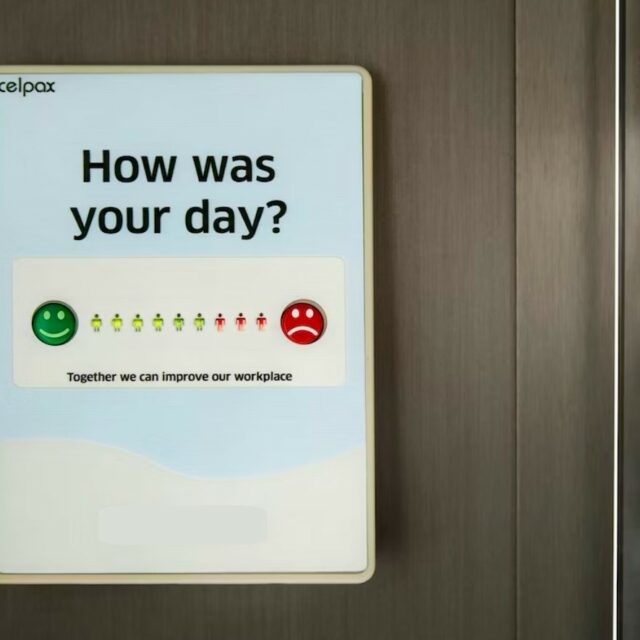As seasoned experts in the realm of surveys and data collection, we recognize the paramount importance of minimizing survey abandonment rates. In this section, we will delve into what survey abandonment entails and explore its profound impact on both data quality and business intelligence.
Survey abandonment occurs when a respondent initiates a survey but fails to complete it—click here to learn all about it.
This phenomenon can be attributed to various factors, such as waning interest or distractions that arise during the survey process. Alas, high rates of survey abandonment can prove detrimental to your research endeavors by introducing bias into your results and leaving you with incomplete data. When respondents abandon surveys midway through, it creates gaps within your dataset that have the potential to skew your analysis. Consequently, this may lead to erroneous conclusions and impede your ability to make well-informed decisions based on reliable insights.
Moreover, elevated levels of abandoned surveys can exact a toll on your resources as you invest time and effort in crafting surveys that go unfinished. To ensure unwavering accuracy and meaningful outcomes from your surveys, it is imperative to address the issue of high survey abandonment rates head-on. By comprehending why respondents opt out prematurely and implementing effective strategies aimed at reducing these rates, you can elevate data quality while unlocking invaluable insights for optimizing your business.
Identifying the Causes of Survey Abandonment
To effectively address survey abandonment rates, it is crucial to uncover the reasons why respondents choose to abandon surveys. By gaining a deep understanding of these factors, you can make informed decisions and implement strategies that directly tackle them.
- Length: One of the top reasons contributing to survey abandonment is its length. Long surveys can be overwhelming and time-consuming for participants, leading to shopping fatigue or simply running out of time. To combat this issue, consider shortening your surveys by focusing on essential questions and eliminating any unnecessary ones.
- Complexity: Complex survey questions can confuse respondents and discourage their participation. Avoid using technical jargon or convoluted language that may be difficult for participants to understand. Instead, strive for simplicity in your question wording and structure.
- Relevance: When a survey feels irrelevant or unrelated to a respondent’s interests or experiences, they are more likely to abandon it midway through. It is important to ensure that your survey content aligns with your target audience’s needs and preferences by conducting thorough research beforehand.
- Privacy concerns: Surveys that require personal information beyond what respondents are comfortable sharing can lead to abandonment due to privacy concerns.
- Lack of incentives: Lack of value can discourage respondents from finishing surveys. Offering rewards or emphasizing how their feedback will make a difference can help increase completion rates.
- Timing: Time is another important factor in preventing survey abandonment. Sending surveys at inconvenient times, such as during busy work hours, may result in higher dropout rates.
- Technical issues: If the survey platform is slow, unresponsive, or incompatible with certain devices, respondents may give up on completing it.
- Understanding your audience: Gaining a deep understanding of your audience is key when designing effective surveys that minimize abandonment rates. Take into account demographic information such as age, gender, location, and interests when tailoring your questions and overall survey experience.
- Design and interface: Survey design and layout also have a significant impact on completion rates. A cluttered or visually unappealing interface might deter respondents from continuing with the questionnaire.
- Unengaging content: A survey that lacks engagement can quickly lead to abandonment. If the questionnaire is monotonous, repetitive, or fails to capture the respondent’s attention, they may lose interest and exit. Providing an interesting and interactive survey experience encourages respondents to continue and complete the survey.
By proactively addressing these significant factors behind survey abandonment head-on, you can significantly improve response rates while maintaining high data quality. Remember:
- Keep surveys concise by focusing on essential questions.
- Use clear language without complex terminology.
- Make sure each question resonates with the participant.
- Understand your audience’s demographics before designing the survey.
Strategies to Reduce Survey Abandonment
As a seasoned survey research expert, I fully grasp the importance of minimizing survey abandonment rates. High abandonment rates not only compromise data quality but also hinder valuable business insights. To ensure an exceptional survey experience, it is imperative to implement highly effective strategies that encourage respondents to complete surveys. In this section, I will delve into the most crucial and impactful strategies for reducing survey abandonment.
- Masterful Survey Design and Structure:
- Keep your surveys concise: Lengthy surveys are notorious for inducing respondent fatigue and skyrocketing abandonment rates. By focusing on collecting only essential information and keeping the number of questions to a minimum, you can combat this issue head-on.
- Ensure unwavering relevance: Each question should serve a specific purpose that directly aligns with your research objectives or customer feedback goals. Irrelevant questions have no place in your survey as they frustrate respondents and significantly increase the likelihood of abandonment.
- Embrace crystal-clear language: Steer clear of complex jargon or technical terms that might bewilder participants. Opt instead for simple yet powerful language that ensures utmost clarity throughout the entire survey.
- Enticing Incentives and Rewards:
- Offer irresistible incentives: Consider providing enticing rewards or incentives as a way to motivate respondents to complete your survey with gusto! This could include exclusive discounts, coveted gift cards, or even entries into exciting prize draws.
- Articulate undeniable value: It’s paramount to clearly communicate the immense benefits of participating in your survey so that respondents understand just how invaluable their input truly is. Show them precisely how their opinions will contribute towards enhancing products or services.
- Seamless Mobile Optimization:
- Harness mobile optimization prowess: With more people relying on smartphones for all things online – including surveys – it’s absolutely critical to ensure seamless compatibility with mobile devices. By employing responsive design techniques, you guarantee effortless navigation on smaller screens, thereby significantly boosting completion rates.
By skillfully implementing these expert strategies, you can effectively slash survey abandonment rates while simultaneously upholding the highest standards of data collection excellence.
Measuring and Monitoring Survey Abandonment Rates

Measuring and monitoring survey abandonment rates is crucial for researchers and business owners. It reveals valuable insights into survey effectiveness and identifies areas needing improvement. Analyzing abandonment data helps uncover why respondents leave surveys unfinished, allowing proactive steps to reduce abandonment rates. Here are expert tips to measure and monitor survey abandonment effectively:
- Track Abandonment Rates: Calculate the overall rate by dividing abandoned surveys by started ones. This metric shows how many respondents drop out before completing your survey.
- Analyze Abandonment Data: Dive deep to find patterns or trends in survey abandonment, like high dropout rates in specific questions or sections. This analysis pinpoints problem areas requiring immediate attention.
- Understand Reasons for Abandonment: Know why respondents abandon surveys to make improvements – lengthy questionnaires, irrelevant content, technical issues, or lack of motivation.
- Implement Continuous Improvement: Take action based on feedback from completed surveys and address pain points highlighted during analysis.
- Consider Incentives: Motivate respondents with rewards like discounts or gift cards to increase participation rates.
- Highlight Progress Indicators: Use indicators in your design so participants understand their journey towards completion, encouraging them to finish the survey.
- Use Save Options: Allow participants to save progress if they can’t finish at once, reducing the likelihood of abandonment due to time constraints or interruptions.
By diligently measuring and monitoring survey abandonment rates, you gain valuable insights into user experience and make data-driven improvements for higher completion rates. Remember that reducing survey abandonment is an ongoing process requiring continuous evaluation and optimization.
TL;DR: Key Reasons for High Abandonment Rates
Let’s sum it all up! Here are the top reasons for survey abandonment:
- Length: Long surveys overwhelm and tire participants, leading to abandonment.
- Complexity: Confusing questions frustrate respondents and lead to exit.
- Technical issues: Platform problems or incompatibility can deter completion.
- Lack of incentives: Rewards and value communication boost participation.
- Timing: Inconvenient survey timing contributes to higher dropout rates.
- Privacy concerns: Collecting sensitive data can lead to abandonment.
- Interruptions: Unexpected distractions cause participants to exit surveys.
- Survey design: Poorly designed interfaces discourage continuation.
- Relevance: Irrelevant questions make respondents lose interest and abandon.
- Unengaging content: Boring or monotonous content leads to disinterest.
- Response fatigue: Repetitive questions and options can lead to abandonment.




